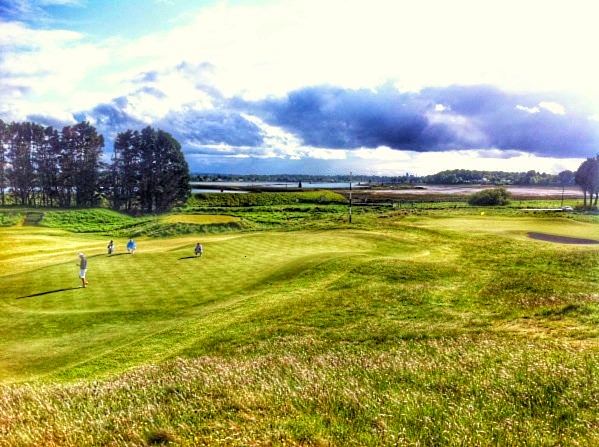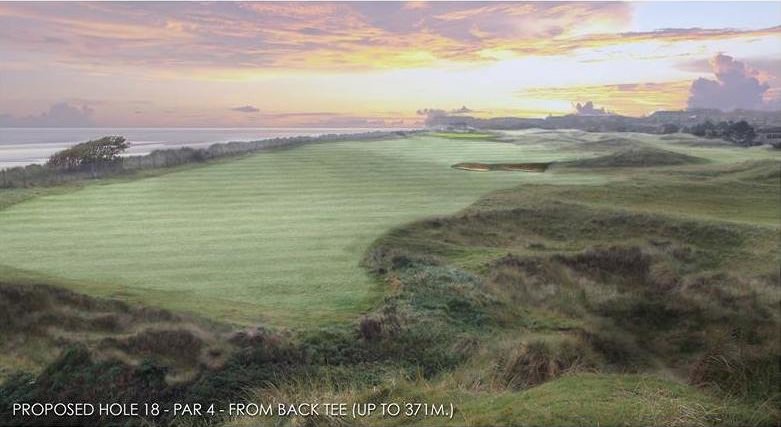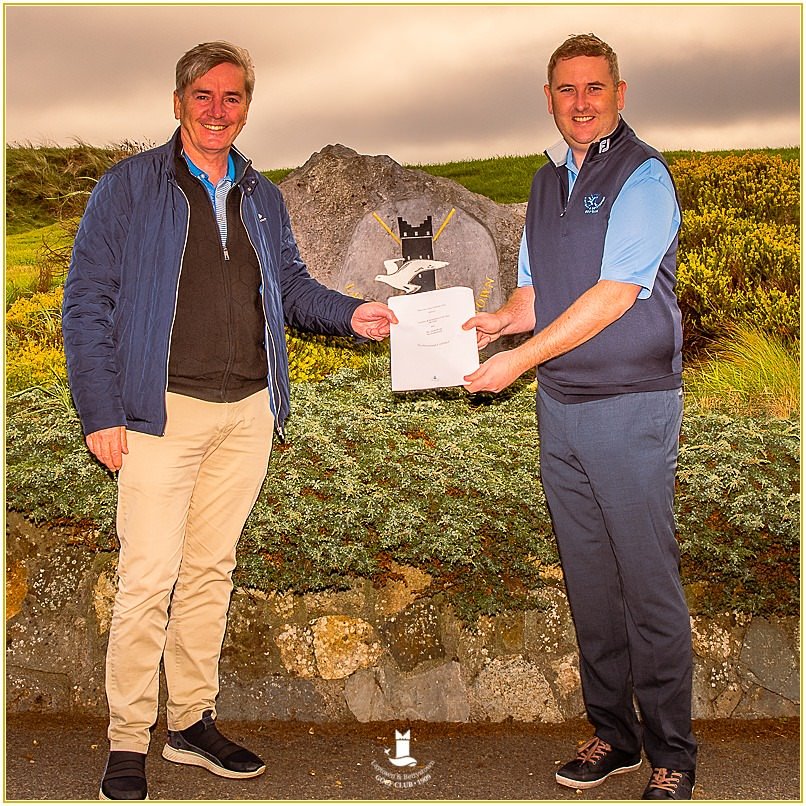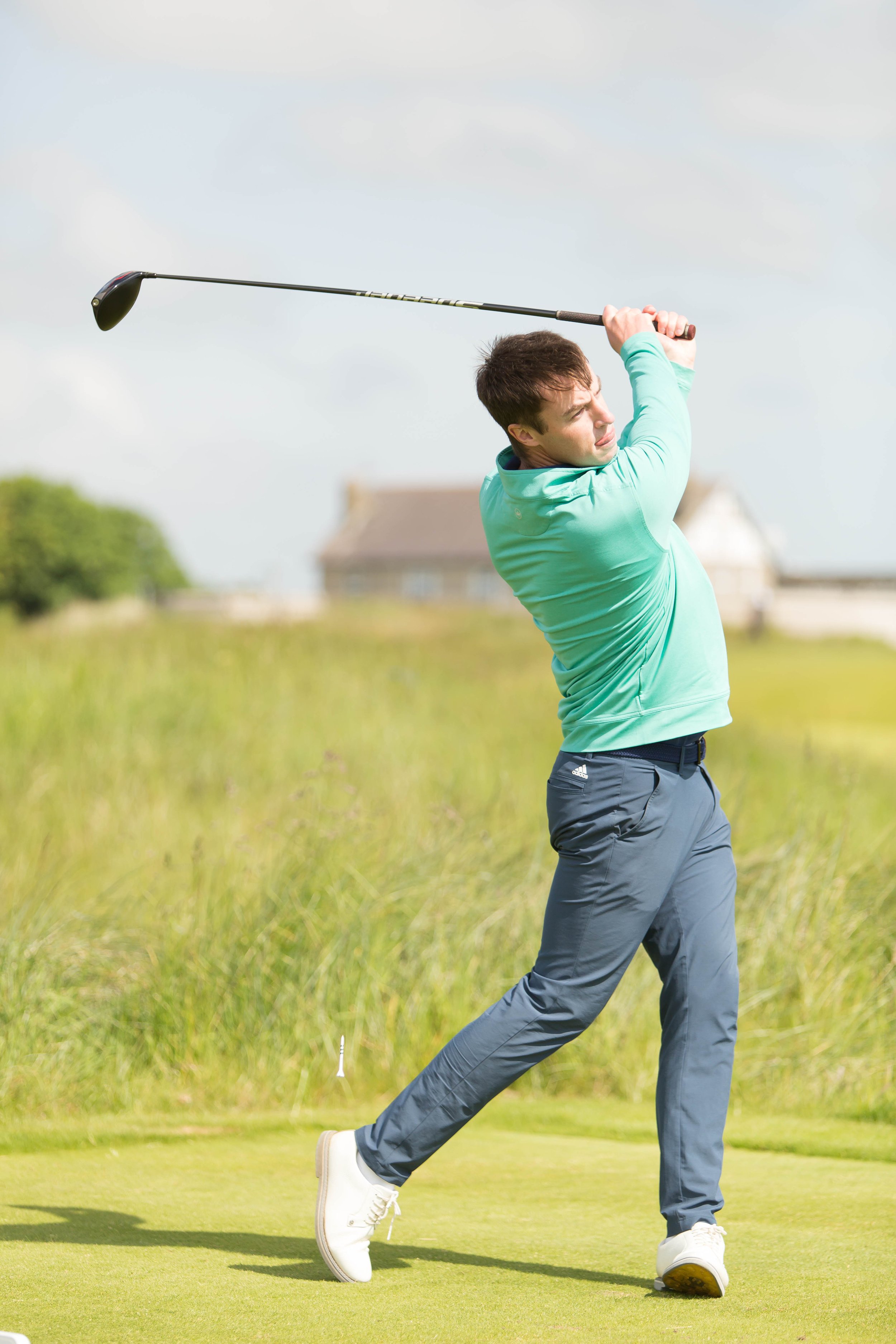The eternal beauty of Baltray

The third and 10th greens at County Louth with the Boyne Estuary in the background. Picture © Brian Keogh
They will jocosely lord it over their friends and near neighbours at Laytown and Bettystown that Tom Gilroy, a Scottish banker who lived at Coney Hall in Mornington, abandoned the 11 rudimentary holes he had laid out on his lands there because of the nuisance of rabbits and other difficulties and headed across the river Boyne to explore the promised land at Baltray.
He was advised to do so by local barrister George Henry Pentland and in 1872, County Louth Golf Club was born. As Gilroy was to remark later: “Here was I, trying to make a course out of poor material when, less than a mile away, there was one of the best pieces of golfing ground in the world!”
That’s a mile as the crow flies but not for golfers making the pilgrimage to one of Ireland’s great golfing places. Approaching Drogheda from the south, you must cross the Boyne, take a right turn along the docks and then enjoy that exhilarating drive along the estuary that ends at County Louth Golf Club.
You might almost be a sailor, like the great Captain Lyons of Laytown and Bettystown fame, heading out to sea on some epic voyage as you tack your way along the river. The sight of the famous Elizabethan “Maiden’s Tower” at Mornington to your right will alert you that you are close to your journey’s end and the beginning of a new one.
Little wonder this drive is one of Shane Lowry’s favourite journeys. He did, after all, make it every day as he headed to Baltray for the 2009 Irish Open Championship, which he won as an amateur with a performance for the ages.
A thatched cottage at a bend in the road signals the right turn into the village of Baltray that has now become synonymous with a course that was laid out by Gilroy and an unknown professional by the name of Snowball and rebuilt in the 1930s by the great Tom Simpson to give us the club that features on every Irish golfer’s top-10 list.
The combination of the course - challenging but generous - and the warmth of the welcome in the clubhouse makes it one of Irish golf’s perennial favourites.
The distant clubhouse at Baltray is always a welcoming place. Picture © Brian Keogh
As former Golfing Union of Ireland President, Albert Lee remarked of the club where he spent so many days during the running of the annual East of Ireland Amateur Open: “Nobody ever plays Baltray and says that they don't want to go back.”
The new course was opened in 1938 by the great Jimmy Bruen and despite some refinements and the repositioning of the clubhouse much of Simpson’s work is recognisable today thanks to improvements carried out by Donald Steel and Tom Mackenzie and recent some new work - including an alternative par-three 17th - by the award-winning young Danish architect Philip Spogárd.
Famed as he home of the great Clarrie Reddan and Philomena Garvey as well as amateurs such as Mark Gannon and friendly professionals such as Des Smyth and Paul McGinley (a former country member), County Louth is inextricably linked to the East of Ireland Championship, which was set up the the Leinster Branch in 1941 and won 11 times by Joe Carr.
The club has host the Vagliano Trophy, the Home Internationals and the Irish Open twice, in 2004 and 2009. Little wonder then that this 7,031 yard, par-72 gems is revered by the elite for its wonderful greens and those enigmatic par-threes.
As Rory McIlroy explained during the 2009 Irish Open, “Baltray is a great golf course. It's a great layout and you have to have all of the shots. The key is that you need to get off to a really good start. You have three par-fives in the first six holes, and you have to be two or three under through six, because then you have quite a difficult stretch from seven to 11 where you sort of hang onto that score.
“The last few holes gives you a couple of opportunities - you can get close to the 14th and you've got 18, the par five - but there's a few difficult holes in the middle, so if you can start really well around here, it makes a lot of difference.”
It’s the par-threes that cause most headaches, as Mark Gannon likes to say, the second shots to this quartet of one-shotters are the hard shots at Baltray.
Watching the East. Is there a better place to watch the game when the sun is shining? Picture © Brian Keogh
“I would put the fifth as one one of the best holes in the world,” said Pádraig Harrington. “It’s just a superb par three. It is just 175 yards, not a beast of a hole but just a superb golf hole, it really is.
“The seventh is another. The two par threes on the front nine are as good as you will get anywhere. I would definitely put five as my favourite hole. But you don’t miss it right!
“The 15th is not a scary par-three but it has its troubles. But on the fifth and seventh you want to walk away with pars.”
During the 2004 Irish Open, Darren Clarke had to be reminded by caddie JP Fitzgerald that he had a hole in one on the fifth on his way to victory in the 1989 East of Ireland championship. But he has also had a triple bogey six as well.
Asked if he would rename the fifth - the Haven- Clarke suggested “Get Me Out of Here.”
Like the sea, a links courses is ever changing and County Louth has taken steps to remain relevant as well as challenging.
The proof of the pudding is in the eating and club manager Liam Murphy explains that green fee income was up 15 percent in 2013 with many of those visitors hailing from abroad.
“The typical comment on the golf course is that our greens would be as good, if not better, than anywhere else,” Liam explains. “That has always been the case here and the players who come to play in championships here, especially the East, look forward to the greens most of all because they are so good.
“The tranquility is another factor that everyone remarks on. You could be at other links courses and have aeroplanes flying over and back all day. Out here you hear absolutely nothing. There are no roads nearby, it is pure tranquility and, of course, it is a great layout.”
Following changes carried out to the course a decade ago, County Louth has continued to work hard to improve its links and changes have been made to the second green, which was altered by Mackenzie and Steel with the creation of three tiers.
The result never quite earned the full approval of the members, who felt the second tier wasn’t wide enough to warrant a decent pin position.
“What we have done is brought it back two-tier green with a fairly high rise at the front of it and new bunkering to the left, removed the bunker on the right and put in some run offs there,” Liam explains.
“We have also made some small alterations on the fifth, widening the back of the green slightly to give some more pinable areas. The texture of the grass had also become quite poor because of the bowl effect of the green and all the pinable areas were down the central spine of the green so the coarse grass was beginning to dominate.”
The work was carried out by Danish architect Philip Spogárd, who has also built an alternative 17th, to the right of the existing green.
“It has always been felt here that the 17th was a little bit out of kilter with the rest of the holes. Could it replace the current 17th? There will be no decision taken by the members until such time as they get a chance to play it and whether they want to incorporate it officially into the golf course or whether they want to keep it as an alternative hole in the future.
“It is shorter, only playing around 150 yards but we have an option to put in additional tee boxes and make it play longer. It is designed in such a way as to make it more akin to some of the other par threes where the premium is on accuracy. it has just one tier and it is nicely contoured, angled form back right to back left and bunkered in the centre right front. So there are many pin positions, depending on how difficult you want to make it play with regard to bringing that bunker into play.”
If the golf course is not enough to convince you to make the trip, the wonderful clubhouse food should be the clincher. With 12 simple but welcoming dormie rooms above the clubhouse, it’s the perfect location for a pure golfing getaway.
With nothing more than the twitter of terns to wake you from your slumber, in minutes you can be tucking into a sumptuous full Irish breakfast before heading out to tackle one of Ireland’s best loved golfing masterpieces.










